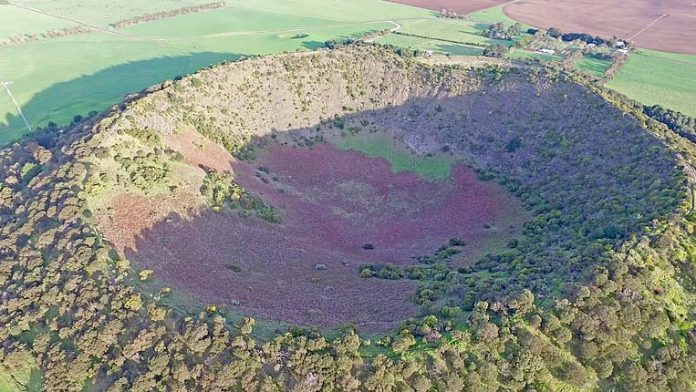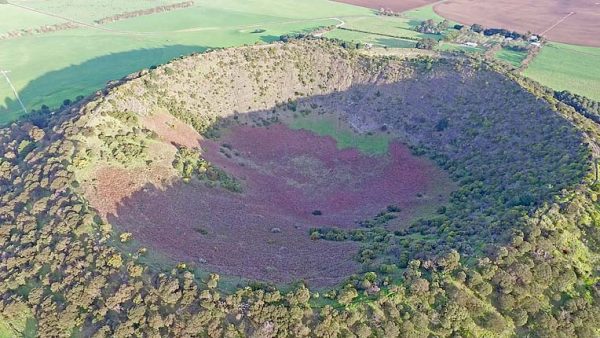

A UNIVERSITY professor has developed a new way to look at Mount Schank by turning the volcanic landscape into a virtual reality video using drone imagery.
The Limestone Coast location was the first to be selected for a virtual reality series aimed at highlighting South Australia’s best geological sites.
University of South Australia Associate Professor Tom Raimondo has been coordinating the project, which he hoped would excite people to choose geology as a profession.
“We want to find the future professionals in this industry and we think creating virtual reality experiences of our geological states is one way to engage young people,” he said.
“These virtual tours make people feel like they are there and we hope suddenly they might want to pursue a career in geology.
“This VR experience adds a new dimension and it’s hard not to get excited about it.”
The virtual tour is created using drone-filmed 3D model and video, which allow users to explore the volcano from any angles.
Only erupting around 5000 years ago Dr Raimondo said Mount Schank was chosen due to its great volcanic history.
“We chose it because it is the youngest volcanic province in Australia,” Dr Raimondo said.
“It was actually the perfect size for this kind of project because it is big enough to have that “wow” factor, but also small enough to not have too much to focus on.”
Even Dr Raimondo said he was surprised and amazed by the new perspective the drone video gave him compared to being on the ground.
“It is really second to none because you can see a lot more detail , such as the subtle land forms,” he said.
“You can see things like that perfectly in this 3D model and it really gives you an appreciation of the size of this amazing site.”
The feedback from students at the university has been positive and Dr Raimondo said it was great to have content using this kind of technology available for education.
“VR is actually quite mature technology now, mainly driven by the gaming industry, but there is not heaps of content for education, particularly in a geological sense,” he said.
“The is quite a niche project.”
Dr Raimondo said the next series of projects will involve other sites around South Australia and potentially expand into other states.
“We are working on Hallett Cove at the moment, which is a classic geology site with glaciers and mountains,” he said.
“This project will be a bit more like a game with activities and questions throughout.
“We are also in the process of developing a virtual reality drill site because these days students do not get to go to remote drill sites as often, so we hope to give them an insight.”
He admitted his excitement was building as projects continued to develop and be shared with the public.
“That’s the joy of it – getting people together a being able to share this with them in a totally different way,” he said.







